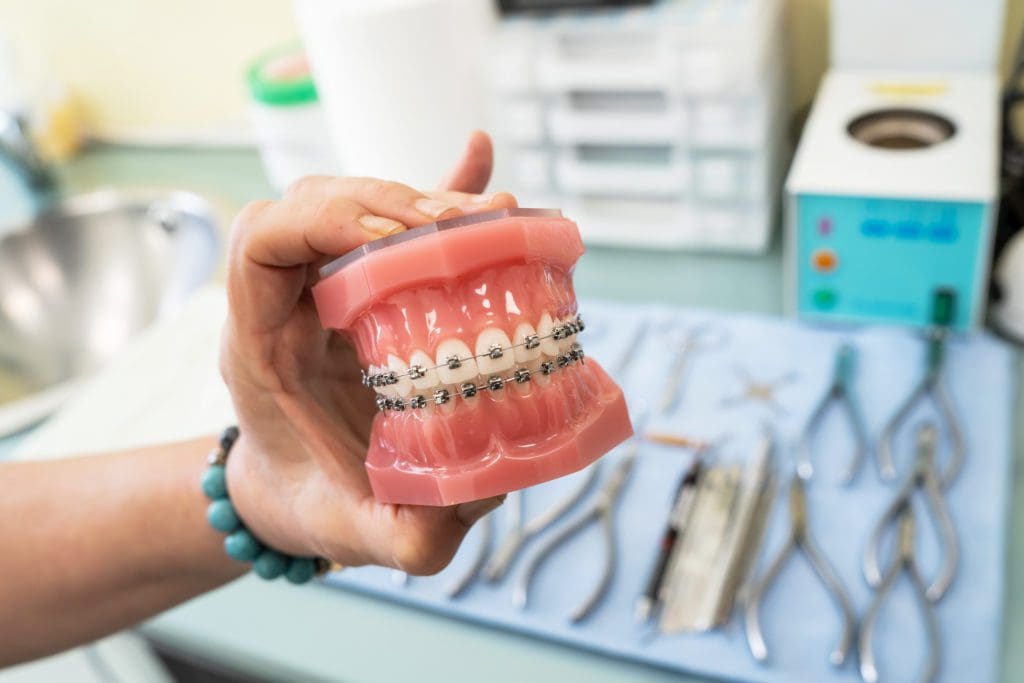Top Tips for Picking the most effective Cumming Orthodontist for Braces and Aligners
Top Tips for Picking the most effective Cumming Orthodontist for Braces and Aligners
Blog Article
Comprehensive Guide to Orthodontics Procedures for Remedying Dental Imbalances
In the world of orthodontics, the journey to accomplishing a completely straightened smile involves a myriad of treatments tailored to fix oral imbalances. From traditional braces to invisible aligners and also medical alternatives, the field of orthodontics provides a variety of remedies to address differing levels of oral abnormalities. Understanding the complexities of each treatment, including their mechanisms, benefits, and prospective disadvantages, is critical in making informed decisions about one's orthodontic treatment. As we browse with the thorough overview to orthodontic treatments for dealing with oral imbalances, the intricate details of each method will unfold, shedding light on the path toward a functional and harmonious dental placement.
Orthodontic Procedures Summary

Along with conventional dental braces and clear aligners, orthodontists may also advise other treatments like headgear, palatal expanders, or retainers to resolve particular placement problems (cumming invisalign). These procedures are customized to each individual's unique requirements and may include a mix of treatments to accomplish the wanted results. Routine changes and monitoring are critical parts of orthodontic treatment to make certain progress is on track and to make any kind of necessary adjustments along the road. By undertaking orthodontic treatments, clients can not just achieve a straighter smile yet additionally improve their general dental health and function.
Typical Dental Braces: Just How They Function
When thinking about orthodontic treatments for dental imbalances, conventional braces stand out as a reliable method for dealing with teeth positioning. Standard dental braces consist of braces, cables, and bands that function with each other to apply constant stress on the teeth, gradually moving them into the preferred placement.
One key element of just how traditional braces job is the procedure of bone renovation. As stress is put on the teeth through the braces, the bone surrounding the teeth is reshaped to sustain the brand-new tooth placements. This remodeling is necessary for the long-term stability of the fixed alignment. Clients will need routine changes at the orthodontist's workplace to make certain the dental braces remain to use the correct pressure for effective teeth movement.
Invisible Aligners: Cons and pros
Invisible aligners offer a very discreet and practical option to conventional braces for correcting dental misalignments. These clear, tailor-made trays are essentially unnoticeable when used, making them an appealing option for people seeking a more cosmetically pleasing orthodontic therapy. One of the primary benefits of unseen aligners is their removability, enabling less complicated upkeep of oral hygiene contrasted to standard braces. Patients can get rid of the aligners prior to consuming or brushing their teeth, lowering the danger of food getting embeded the home appliance and streamlining the cleaning procedure.

Surgical Orthodontic Options
Surgical interventions in orthodontics present practical choices for attending dental charges to complicated dental misalignments that may not be successfully solved via standard orthodontic therapies. While typical dental braces and invisible aligners can indental fix lots of orthodontic problems, specific situations require surgical intervention to accomplish ideal results. Surgical orthodontic choices are usually suggested for serious malocclusions, considerable jaw inconsistencies, and situations where the underlying bone structure requires adjustment to accomplish proper placement.
One common surgical orthodontic treatment is orthognathic surgical treatment, which involves repositioning the jaws to deal with practical issues such as trouble chewing or talking. This surgery is commonly performed in partnership with an orthodontist who aids line up the teeth before and after the treatment. Surgical orthodontics might additionally involve procedures to subject impacted teeth, eliminate excess gum tissue, or improve the jawbone to create a much more harmonious face profile.
Before taking into consideration surgical orthodontic options, clients undergo a thorough assessment to determine the need and possible advantages of such interventions. aligners. While surgical procedure may appear complicated, it can considerably enhance both the feature and appearances of the smile in cases where traditional orthodontic treatments why not look here drop short
Retainers and Post-Treatment Treatment

Failure to conform with post-treatment care directions can result in relapse, where the teeth progressively relocate back in the direction of their original settings. Consistent retainer wear, good dental health, and routine oral exams are crucial for keeping the outcomes accomplished through orthodontic surgery and ensuring the lasting security of the fixed dental placement.
Verdict
Finally, orthodontic procedures offer numerous alternatives for remedying oral imbalances. Standard braces make use of steel brackets and cords to move teeth into correct alignment. Invisible aligners give an even more discreet option yet might not appropriate for all situations. Surgical orthodontic alternatives are offered for more extreme misalignments. Retainers are commonly utilized post-treatment to maintain the brand-new positioning. Generally, orthodontic treatments can efficiently boost dental wellness and aesthetic look.
As we navigate via the extensive guide to orthodontic treatments for correcting dental imbalances, the elaborate information of each approach will certainly unravel, losing light on the course towards a harmonious and useful dental placement. - braces
One of the most common orthodontic therapies is the usage of braces, which are composed of metal brackets and cables that use gentle stress to gradually shift teeth right into the desired setting.When taking into consideration orthodontic treatments for dental imbalances, typical braces stand out as a time-tested technique for remedying teeth placing. In addition, unnoticeable aligners may not be appropriate for complicated orthodontic problems that call for even more substantial teeth activity, as they are generally suggested for moderate to moderate cases. Retainers are tailor-made orthodontic gadgets created to hold teeth in their dealt with placements after the conclusion of orthodontic therapy.
Report this page